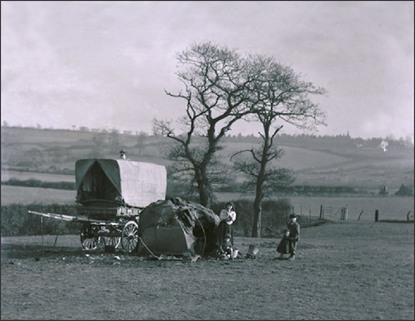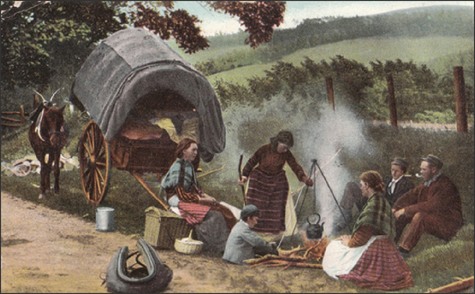

Copyright Warning
All texts/audio/still/motion picture images are strictly copyright to ValleyStream
Media 1980-
copyright holder/s or "unKn". Any unauthorised copying of any images or material
from this website for any use is strictly prohibited without written permission from
the image owners -

In recently proved genetic terms it has been established that most European Gypsies
are all cut from the same ancestral Indian cloth. Only the Kaule’s actual route of
travel to Britain via Spain is what makes them Kaule, having been persecuted and
driven out by the Kralis Espania (Spanish King). Apart from this, their ancestral
rat (blood line) is identical to that of their Rom pala (brothers). Once encamped
and settled in Cymru they soon blended into the Welsh wilderness, and so became known
as theWalshenenge Kaule. Other factors which bound the Kaule together were being
born on Welsh soil, rakerenaWalshanes (speaking the Welsh language -
Until recently, many theories of old from the great Gypsy scholars, such as George
Borrow, Charles Leland and the famous Gypsy Scholar Bauro Rai (great gentleman) John
Sampson, have been based on linguistic research, all carried out “old school”, the
hard way -
In 2012 the latest research and genetic studies have confirmed that
Romani descended from a single group who vacated North Western India around 1,600 years ago. They derived from the Domba tribe, who emigrated from Rajasthan / Gujarati around 420 AD, and therefore the Dom are said to be the ancient ancestors of the modern European Kaule.
Continuing the ancestral tree even further, the Dom are connected to the present day Banjara tribe of Rajasthan. The Banjara are known as the Gypsies of India and are of Jat and Rajat origin; they in turn originate from Afghanistan. The word Banjara means “moorland mover”, a fitting name even for our Welsh Gypsies, who navigated the treacherous Denbigh moors late on dusky nights all those years ago.
Recent research suggests two separate waves of migration came out of India divided by several centuries. The travelling Dom foki appeared in the Balkans around the 14th century before meandering over time across the European continent. Several famali (families) travelled to Western Europe and became known as the Romanichal, Roma or Rom. The ones that located to Persia and Turkey retained the nav (name) Dom.


